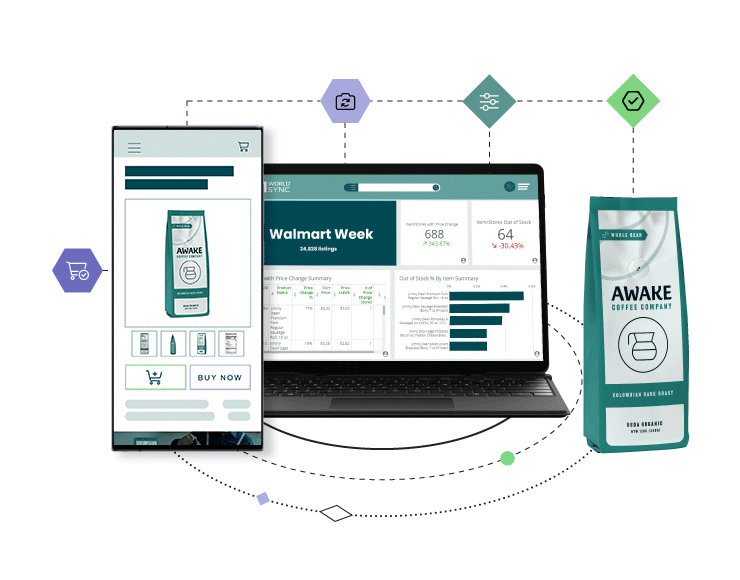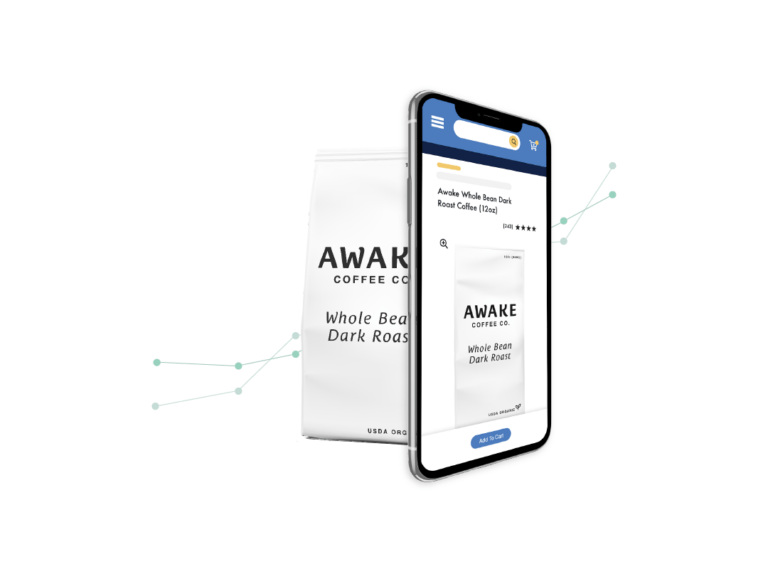Retail E-Commerce Analytics: Anticipating Market Trends and Consumer Needs
August 13, 2024

Retail E-Commerce Analytics: Anticipating Market Trends and Consumer Needs

Staying one step ahead is vital in the e-commerce retail space. Implementing analytics empowers your retail business to forecast demand, understand and meet consumer needs, optimize pricing and build content experiences that help you sell more.
Retail e-commerce analytics allow you to gain valuable insights and data that help you prioritize the next best steps for your organization.
The Role of Analytics in E-Commerce
E-commerce is a constantly evolving machine. Market trends and customer demands change, and your organization must change along with them. Data-driven insights make this agility possible.
Analytics help businesses anticipate consumer needs, predict market trends, optimize supply chain design and make data-informed decisions that guide operations. Predictive analytics that use current and historical data combined with advanced algorithms let you know what to expect next month, next quarter, next year and even beyond.
Predictive e-commerce analytics evaluates big data pools encompassing customer interactions, transaction histories and market trends. It then adds sophisticated modeling to uncover patterns and insights. Your teams use these insights to anticipate demand, personalize user experiences, enhance customer interactions and experiences with your brand and refine your marketing strategies.
Additional retail e-commerce metrics like conversion rates, cart abandonment, CLV and others further enable proactive decision-making to determine how, when and where you choose to optimize your online presence and product content.
The result? Growth and profitability in a very competitive landscape.
Inventory Management and Demand Forecasting
Inventory management is crucial to ensure timely delivery and customer satisfaction. E-commerce analytics surface insights that allow you to anticipate coming retail trends. This data helps retailers forecast demand, plan inventory requirements and ensure sufficient product stock based on historical customer behavior.
Adding to this, Gidon Sadovski, founder of Overnight Glasses, notes, “At Overnight Glasses, predictive analytics have been instrumental in optimizing our inventory management. By analyzing customer behavior and trends, we ensure that the right products are always available, resulting in faster delivery times and improved customer satisfaction.” So, by using predictive analytics, businesses can anticipate demand and meet customer expectations in real-time. This enables more accurate inventory management, helping retailers stay competitive in a fast-paced e-commerce landscape.
Overstocking results in product waste and avoidable storage costs. Understocking your inventory leads to late or unfulfilled orders and customer disappointment, adversely affecting brand reputation and customer sentiment. Implementing e-commerce retail analytics ensures you carry the right product volumes to maximize your resources.
Data-driven inventory decisions optimize supply chain management, eliminating unnecessary or unwanted costs. In turn, you streamline order fulfillment because you’ve addressed bottlenecks and ensured correct stocking for every product in every season. Overstocking and understocking your inventory leads to costly losses. Analytics mitigates over- and undersupply so that your inventory is a source of profit, not waste and frustration.
Segmenting Customers and Targeted Promotions
Consumer needs vary. Segmenting customers allows you to anticipate, meet and exceed the needs and expectations of your diverse audience. E-commerce analytics helps you identify patterns and trends within your customer base to group shoppers based on various data points. Analyzing purchase history, browsing behavior and demographic information lets you create precise customer segments and identify particular consumer needs. When you know needs, you can meet them, and you can do it better than anyone else to deliver a superior customer experience and establish long-term customers.
Identifying specific customer segments allows you to tailor your marketing strategies to target these groups. Predicting user behaviors and using that knowledge to create personalized, targeted campaigns is an effective marketing approach that can yield incredible ROI for e-commerce sellers.
Relevant Product Recommendations that Boost AOV
Predictive analytics are the key to powering relevant product recommendations that shoppers want to buy. Based on browsing and purchase habits, retailers can present bundles and suggestions that resonate with individual customer preferences and draw shoppers to purchase.
A primary advantage of product bundling is its ability to increase average order values. Customers are inclined to purchase more items at each transaction if they know they’re getting a deal for buying a bundle. This boosts your sales and enhances the value provided to customers, increasing your retention rates. Product bundling is all about creating offers that drive action. Purchase analytics evaluate customer behaviors to help you build and present targeted offers that will likely convert.
Post-purchase, e-commerce analytics help you understand which bundles and product recommendations perform well and which don’t. That data empowers you to make decisions about which products you bundle and what customer segments you present them to, allowing you to refine and improve your bundling strategies so they yield conversions.
Purchase history and sales data analysis surface insights and empower you to create compelling offers that enhance your cross-selling strategies.
Personalizing the Customer Experience
The advancement of AI and machine learning in e-commerce analytics allows retailers to better personalize the customer experience. Personalized marketing plans based on consumer behavior help sellers present the right product at the right time to each consumer. According to research by McKinsey, 71% of consumers expect companies to deliver personalized interactions, and 76% become frustrated when they don’t. Online retail spaces are low-loyalty environments, and shoppers will immediately change brands or products If they’re unhappy with their experience.
But when a brand prioritizes personalization and gets it right, they reap the rewards. Companies that excel at personalization generate 40% more revenue than businesses that do not prioritize tailored interactions and experiences.
Below, we list McKinsey’s top personalization preferences for consumers:
- Make in-store and online navigation easy
- Suggest relevant product and service recommendations
- Tailor messaging to consumer needs
- Offer targeted promotions
- Celebrate milestones
- Send timely communications tied to critical moments
- Conduct post-purchase follow-ups
- Personally address communications
- Send triggers based on behavior
- Engage when a consumer makes the initial purchase
Customers want to feel like they’re part of your brand, not a faceless shopper. Using analytics to personalize the consumer experience helps you engage consumers in a meaningful way, increase sales and boost the lifetime value of those customers.
Product Choice and Categorization
In the fiercely competitive realm of online retail (which extends into omnichannel retail), understanding customer needs and meeting them with the right products is essential.
Retail e-commerce analytics help you understand how to choose, categorize and organize your products online. Selecting products based on consumer interests and preferences allows you to give shoppers what they want, increasing conversions and providing tailored experiences that will have them coming back for more.
A robust ratings and review management strategy is another essential tool for enhancing product choice and categorization. Analyzing the information within your ratings and reviews helps you see which products shoppers love, which features need tweaking, and how you can improve your product offerings to better serve your customer base. No one knows your audience better than they do. Capitalize on their feedback and give them the products they want.
Boost Sales, Improve Customer Satisfaction, and Increase Profits with E-Commerce Analytics
Predictive analytics increases sales by enabling businesses to
- Anticipate customer needs
- Personalize offerings
- Optimize pricing
- Improve operational efficiency
- Target promotions effectively
These data-driven actions result in higher conversion rates, increased customer satisfaction and more loyal customers. You need the right analytics tools, approach and support to maximize your e-commerce presence. 1WorldSync has the solutions you need.
1WorldSync’s Retail E-Commerce Analytics platform offers transparent reporting and tools to increase your e-commerce sales and brand presence. We give you on-demand reporting that helps you understand three key areas of sales intelligence:
- Item Intelligence
- Keywords & Rankings
- Competitive Intelligence
Our marketplace analytics platform gathers and organizes e-commerce retail data so you can focus on what matters most.
1WorldSync Retail E-Commerce Analytics…
- Reveals comprehensive marketplace insights of complete item listings across every store
- Measures search performance week to week against online price changes, page positioning and more
- Informs and enhances your marketplace keyword strategies for organic and sponsored searches with our gained or lost view
- Uncovers competitive context through dashboards and shareable reports, such as weight share of search
Data powers successful retailers. Whether you’re a brick-and-mortar, exclusively online or omnichannel, 1WorldSync has the tools to surface valuable insights that empower you to make data-driven decisions that propel your business forward. Connect with us today to learn how we can provide the retail e-commerce analytics tools your business needs.




